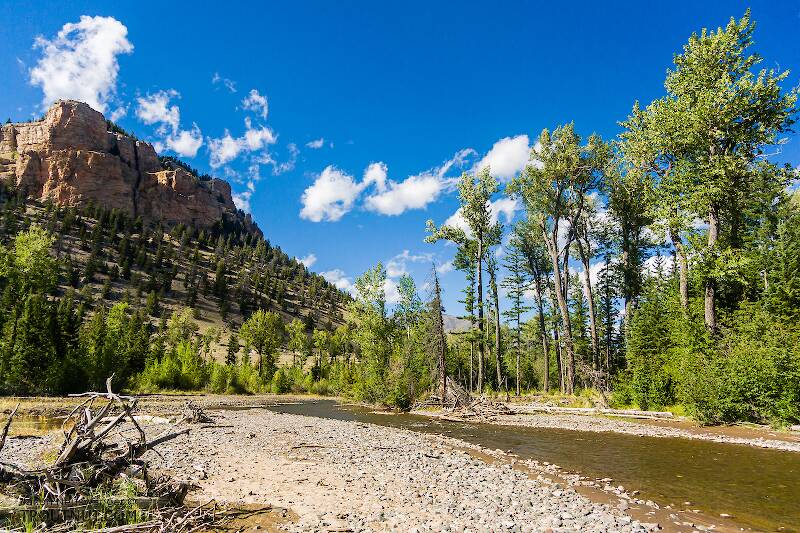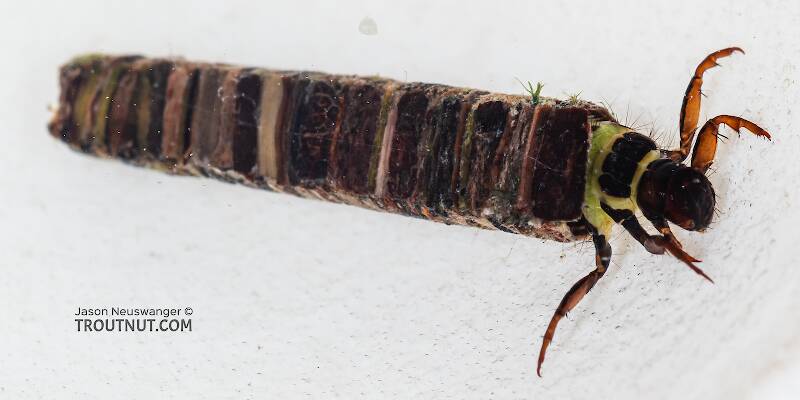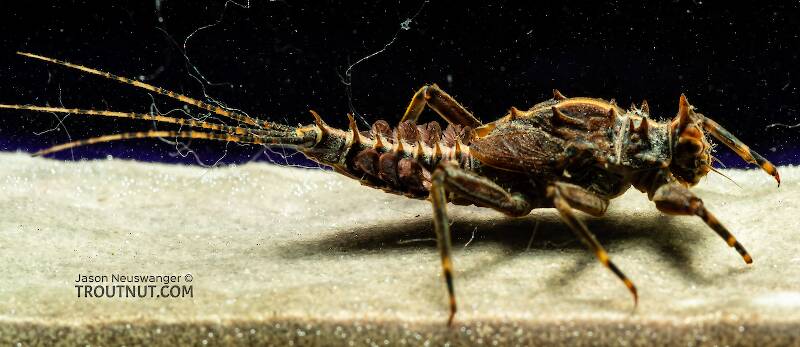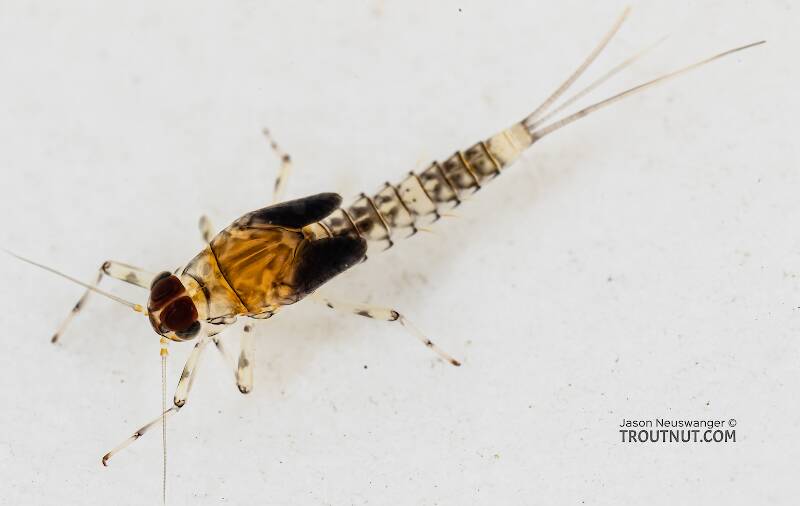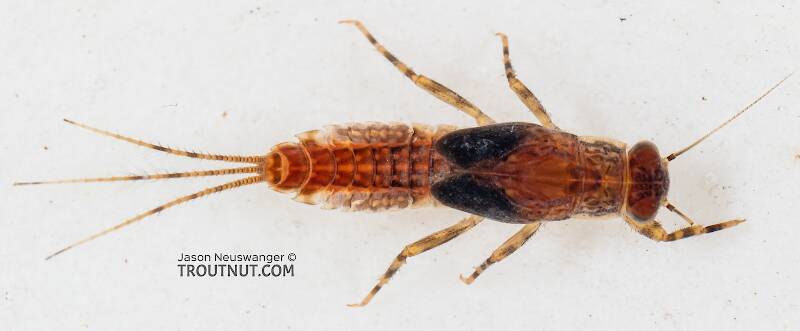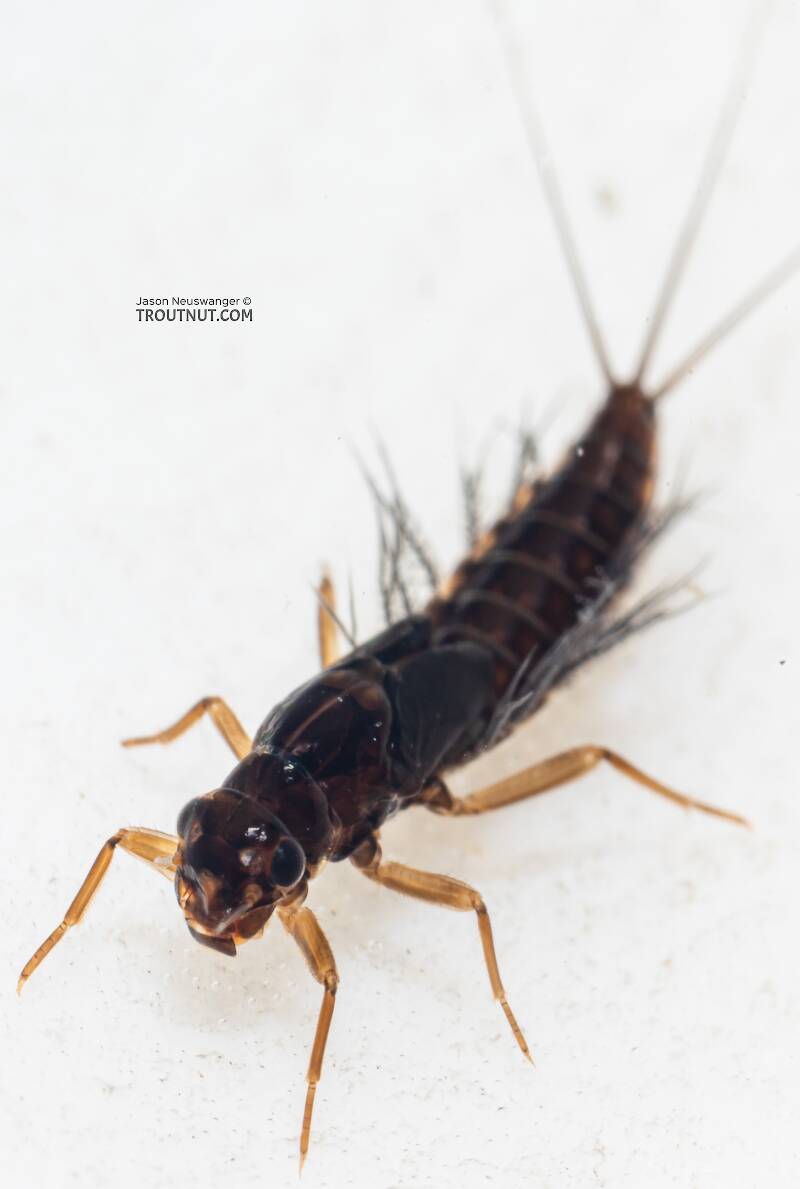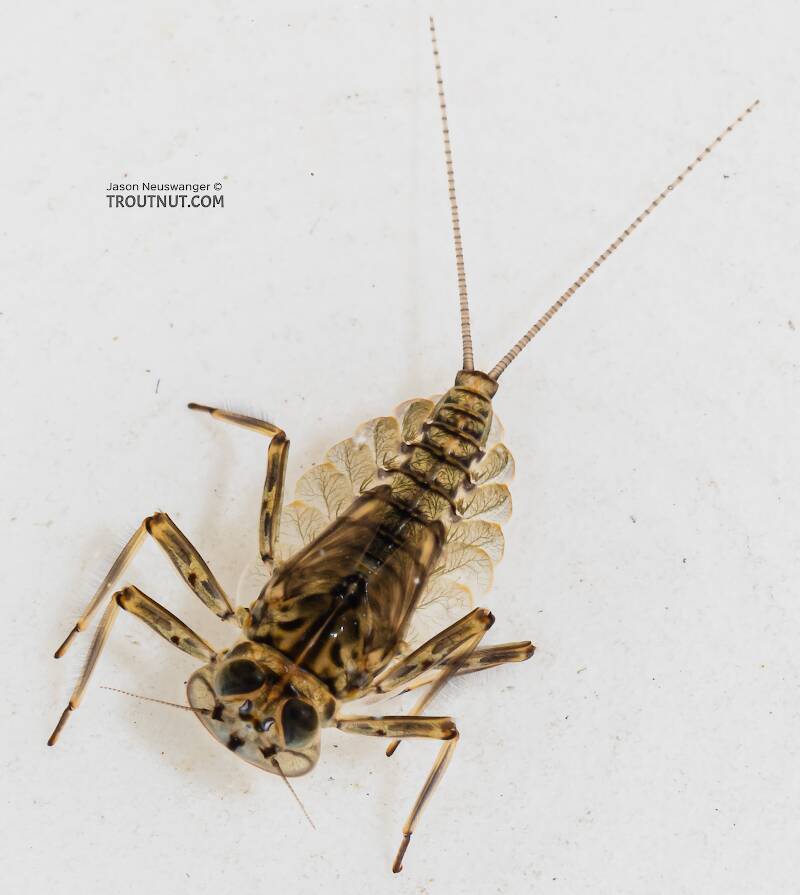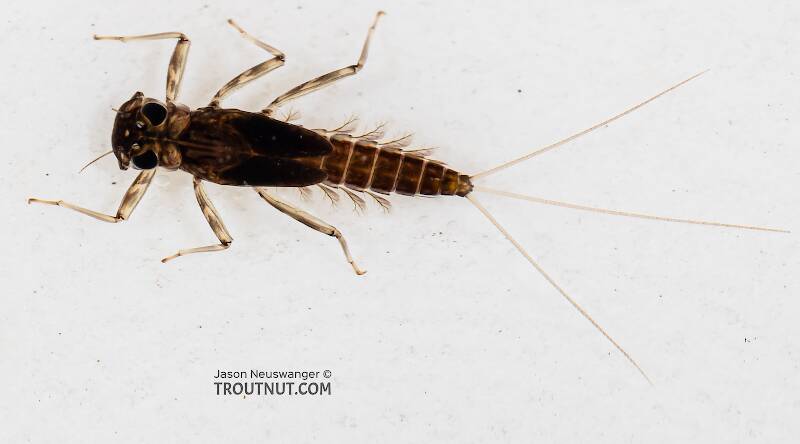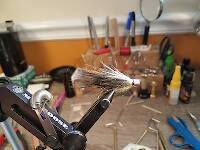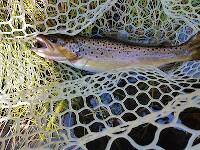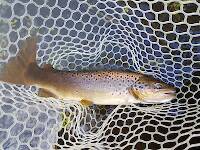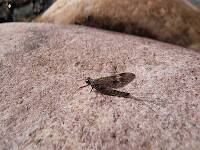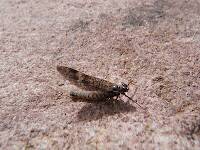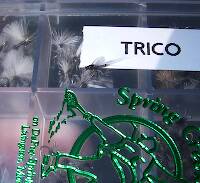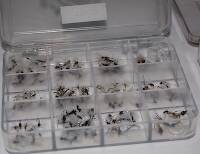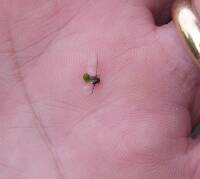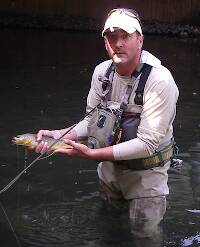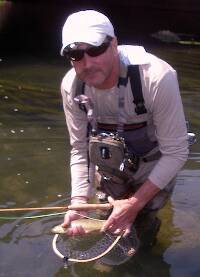
Blue-winged Olives
Baetis
Tiny Baetis mayflies are perhaps the most commonly encountered and imitated by anglers on all American trout streams due to their great abundance, widespread distribution, and trout-friendly emergence habits.
Featured on the forum

It's only barely visible in one of my pictures, but I confirmed under the microscope that this one has a prosternal horn and the antennae are mid-way between the eyes and front of the head capsule.
I'm calling this one Pycnopsyche, but it's a bit perplexing. It seems to key definitively to at least Couplet 8 of the Key to Genera of Limnephilidae Larvae. That narrows it down to three genera, and the case seems wrong for the other two. The case looks right for Pycnopsyche, and it fits one of the key characteristics: "Abdominal sternum II without chloride epithelium and abdominal segment IX with only single seta on each side of dorsal sclerite." However, the characteristic "metanotal sa1 sclerites not fused, although often contiguous" does not seem to fit well. Those sclerites sure look fused to me, although I can make out a thin groove in the touching halves in the anterior half under the microscope. Perhaps this is a regional variation.
The only species of Pycnopsyche documented in Washington state is Pycnopsyche guttifera, and the colors and markings around the head of this specimen seem to match very well a specimen of that species from Massachusetts on Bugguide. So I am placing it in that species for now.
Whatever species this is, I photographed another specimen of seemingly the same species from the same spot a couple months later.
I'm calling this one Pycnopsyche, but it's a bit perplexing. It seems to key definitively to at least Couplet 8 of the Key to Genera of Limnephilidae Larvae. That narrows it down to three genera, and the case seems wrong for the other two. The case looks right for Pycnopsyche, and it fits one of the key characteristics: "Abdominal sternum II without chloride epithelium and abdominal segment IX with only single seta on each side of dorsal sclerite." However, the characteristic "metanotal sa1 sclerites not fused, although often contiguous" does not seem to fit well. Those sclerites sure look fused to me, although I can make out a thin groove in the touching halves in the anterior half under the microscope. Perhaps this is a regional variation.
The only species of Pycnopsyche documented in Washington state is Pycnopsyche guttifera, and the colors and markings around the head of this specimen seem to match very well a specimen of that species from Massachusetts on Bugguide. So I am placing it in that species for now.
Whatever species this is, I photographed another specimen of seemingly the same species from the same spot a couple months later.

Troutnut is a project started in 2003 by salmonid ecologist Jason "Troutnut" Neuswanger to help anglers and
fly tyers unabashedly embrace the entomological side of the sport. Learn more about Troutnut or
support the project for an enhanced experience here.
By Troutnut on July 5th, 2020
This long day trip from home to the Olympic Peninsula was primarily an attempt to dig a geoduck, a Pacific Northwest delicacy and the largest species of burrowing clam. I built a special tool to help dig them up from 3 feet under the sediment in the tidal flat off the Dosewallips River estuary, where the big clams are exposed only during the lowest tides of the summer. They're apparently located among the eelgrass at this beach by locating where they spurt jets of water 5-10 feet into the air as the tide recedes or rises. Unfortunately, I didn't see a single jet of water nor any other sign of a geoduck, even with the tide dropping to -2.8 feet.
My consolation prizes were some delicious steamer clams (manila clams), an easy find higher in the tidal zone, and some bugs to photograph from a short sampling stop upriver.
My consolation prizes were some delicious steamer clams (manila clams), an easy find higher in the tidal zone, and some bugs to photograph from a short sampling stop upriver.
Photos by Troutnut
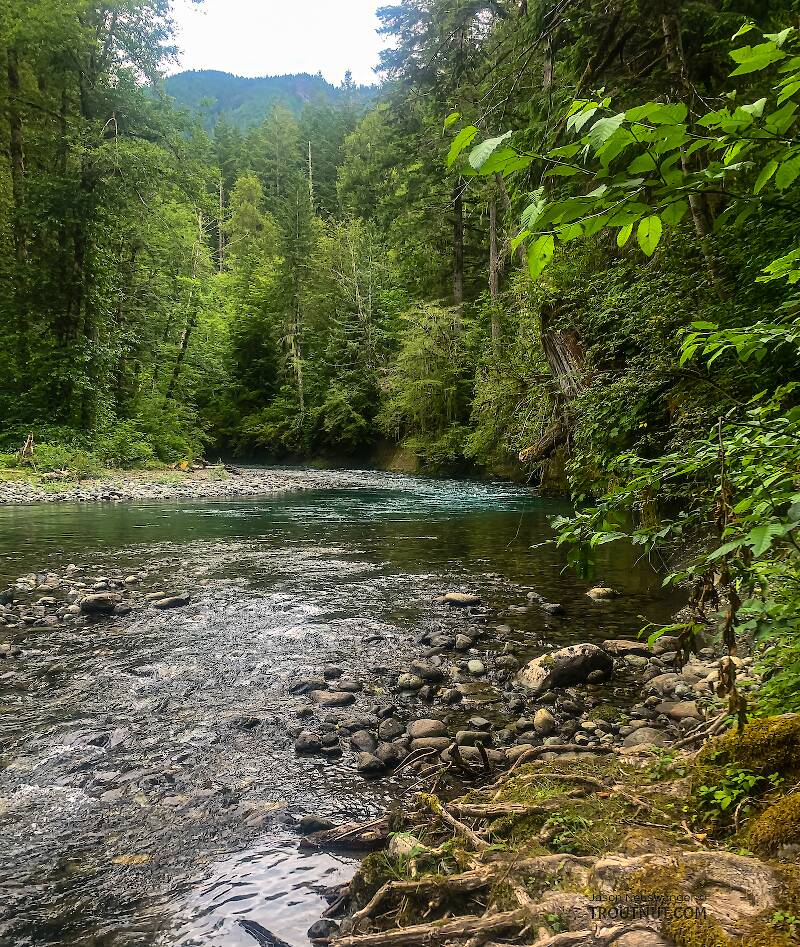
Closeup insects by Troutnut from the Dosewallips River in Washington
Comments / replies
Wbranch on Jul 16, 2020July 16th, 2020, 1:38 am EDT
Wow, what a great looking pool! You should of fished there awhile.
Catskill fly fisher for fifty-five years.
Troutnut on Jul 16, 2020July 16th, 2020, 5:44 pm EDT
I had brought fly fishing gear, but we had to get back. This part of the Olympic Peninsula doesn't have much resident trout fishing, as far as I know. It's almost completely a sea-run fishery and the run wasn't in yet.
Jason Neuswanger, Ph.D.
Troutnut and salmonid ecologist
Troutnut and salmonid ecologist
Quick Reply
Related Discussions
Topic
Replies
Last Reply
17
Feb 11, 2014
by Crepuscular
by Crepuscular
13
Aug 25, 2010
by Shawnny3
by Shawnny3
6
Aug 22, 2010
by Lastchance
by Lastchance

